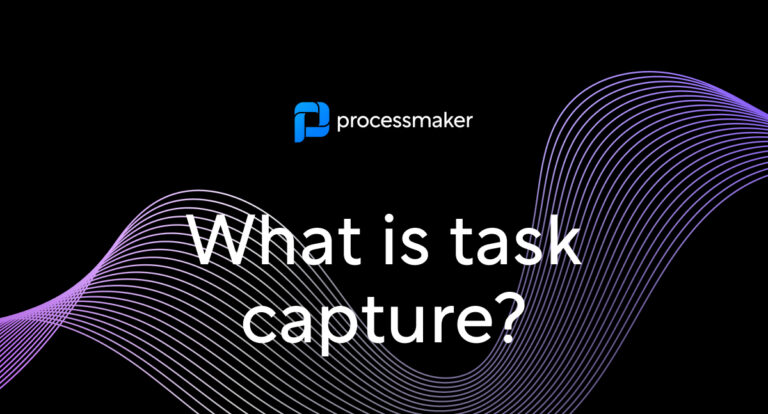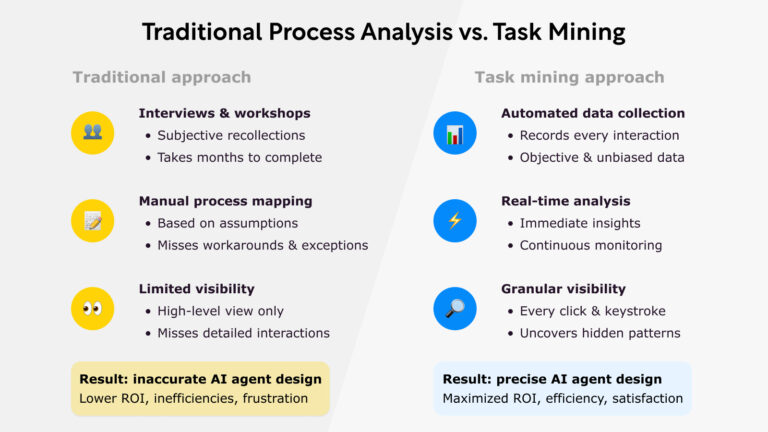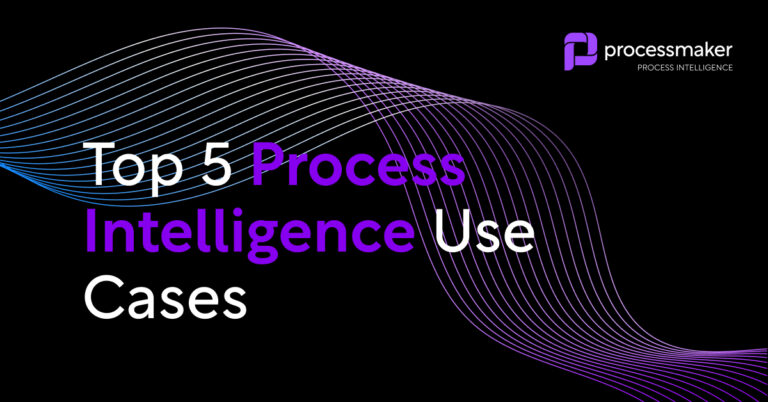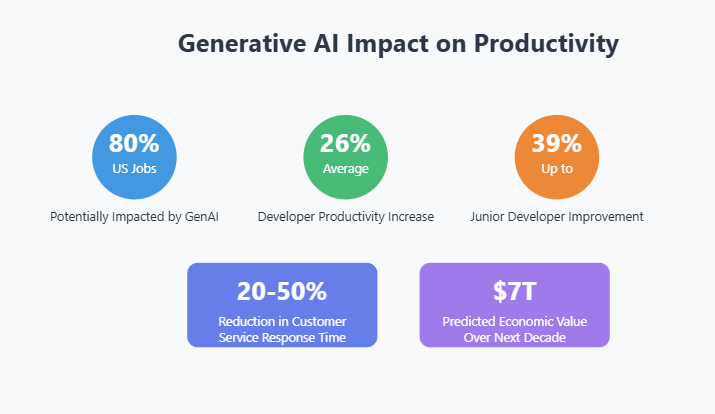Task capture is a core element of increasingly popular task mining solutions helping enterprise businesses improve task and process efficiency. In this article, we explain simply what it is and how it works.
What is task capture?
Task capture technology, through process recording, collects and analyzes user interaction data from employees’ workstations to measure how work is done within a team or a company.
Task capture is a core feature of task mining software. There are at least five different types of task capture technology – but at their core, they all work in the same way. They capture information from different employee’s workstations and then apply task mining algorithms to enable task and workflow analytics.

Task capture purpose
By leveraging task capture, organizations can pinpoint areas for improvement, automate repetitive tasks efficiently, and significantly enhance overall productivity. This technology not only helps in understanding the intricacies of business processes but also provides a solid foundation for continuous process improvement and intelligent automation.
How task capture works
The task capture process typically involves the following steps:
- Data Collection: By monitoring user interactions with software applications, data is collected in the form of logs, screenshots, or other means. This data collection is a crucial part of process documentation, ensuring that every step and action is comprehensively recorded. This data includes information on user actions, time spent on tasks, and the order of tasks performed.
- Data Processing: Collected data is then cleaned, transformed, and structured to prepare it for analysis.
- Pattern Recognition: Machine learning algorithms are applied to the processed data to identify recurring patterns, trends, or anomalies in the tasks performed by users.
- Analysis and Insights: The results of pattern recognition are analyzed to provide actionable insights, such as identifying bottlenecks, inefficiencies, or areas for improvement in the workflow.
- Optimization and Improvement: Based on the insights gained, process improvements can be implemented, such as automating repetitive tasks, redesigning user interfaces, or streamlining workflows to enhance efficiency and user satisfaction.
Key benefits of task capture to analyze business processes
Task capture in task mining can provide valuable information for businesses looking to optimize their processes, reduce costs, and improve overall productivity. Some of the key benefits include:
- Increase efficiency. Task capture allows you to quantify and improve processes or workflows, and provide concrete evidence-based feedback on tasks. Creating a detailed process map helps in visualizing workflows, making it easier to identify inefficiencies and areas for improvement.
- Remove variance and error. Task capture helps you identify where users are not following the agreed process or workflow happy path.
- Improve compliance. Task capture enables you to track compliance and ensure policies are followed.
- Identify automation opportunities. Task capture allows organizations to quantify the time and cost of different types of manual processes and workflows, identifying areas where automation can replace manual, repetitive work.
Automating repetitive tasks with task capture
Task capture plays a crucial role in automating repetitive tasks, which often drain productivity and efficiency. By capturing and analyzing user interactions, task capture helps identify tasks that are prime candidates for automation. This allows organizations to redesign user interfaces and workflows, reducing the need for manual labor. Consequently, businesses can adopt a bottom-up automation strategy, where automation initiatives are driven by the actual needs of the business rather than the limitations of the technology. With task capture, organizations can automate repetitive tasks, freeing up employees to focus on higher-value activities that drive business growth and innovation.
Different types of task capture technologies as a process discovery tool
- Task recording – task recorders are simple software apps installed on a workstation that collect interaction, including keystrokes, mouse clicks, scrolls, and other activities with timestamps and potentially also screenshots or video recordings.
- Automated task capture – automated task capture solutions work much in the way of task recording apps, but they are typically more sophisticated and may not require the employee to activate and pause recording activities.
- Process task capture – many process mining software solutions have task mining functionality that can involve gathering task-level granularity of data from event logs, much in the way process mining works.
- OCR task capture – a subfield of automated task capture technology, consists of different task mining solutions that utilize optical character recognition (OCR) technology to capture information from browsers or user interfaces.
- Process intelligence – a relatively new approach to task capture is process intelligence. It tracks and captures business objects directly from the user interface of relevant business applications without the need for a recorder or image capture technology. For more information see our latest whitepaper.
Five Examples of Task Capture Tools
- ProcessMaker Process Intelligence: the first hybrid solution that combines process mining and task mining with generative AI event log technology.
- UiPath Task Mining: A task mining solution that analyzes employees’ desktop activities to discover, analyze, and optimize business processes.
- Celonis Task Mining: A task mining tool that captures and analyzes user interactions to help organizations understand their processes and identify areas for improvement.
- ABBYY Timeline: a process intelligence platform that records desktop user interactions and pinpoints repetitive and inefficient tasks.
Choosing the Right Task Capture Tool
When choosing a task capture tool, organizations should consider several factors, including the type of business processes they want to capture, the level of detail required, and the integration with other tools and platforms. It’s essential to select a tool that provides a comprehensive workflow diagram, analyzes user interactions, and collects smart data to inform business decisions. Additionally, organizations should consider the scalability and flexibility of the tool, as well as its ability to support a bottom-up automation strategy. By choosing the right task capture tool, organizations can streamline business processes, automate repetitive tasks, and drive business growth.
Why does task capture matter?
Task capture is the core enabling technology for task mining solutions. As more companies explore ways to improve processes, team efficiency and enable intelligent automation – task capture provides ways to identify challenges such as swivel chair inefficiency.
Enteprise leaders also need to understand the core mechanics of task capture – as different methods of task mining will have implications on data privacy and data protection. For example, in the European Union (EU) some task recording solutions may not be compliant with GDPR legislation, if they are unable to mask or remove personally identifiable data from the task capture flow.





